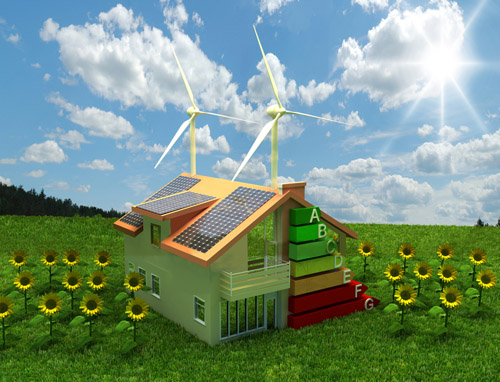
A green building is a healthier building that is good for the people who live and work in it and for our threatened planet. Sustainable building practices make sound sense on every level and are economically as well as environmentally smart. Whether the project is a large public building, a factory or green remodeling of a domestic dwelling, green is the way to go. The elements of sustainable building cover a range of strategies designed to optimize health and efficiency and create a better environment for all.
In times of dwindling oil reserves and rising fuel prices, energy efficiency is a cornerstone of sustainable building. Almost every aspect of a home’s design can be geared towards using energy more efficiently. Orientation, roof design, window placements and materials can all work to reduce wasting of energy. Smart design is central for passive solar energy use, where buildings harmonize with the environment, using thermal mass to manage temperatures and ventilation, and reduce the need for heaters and air conditioners.
For heating, cooling and electricity, green homes are designed for maximum efficiency, and to take advantage of advances in green technology, including solar, wind and geothermal energy. Although green building is often associated with trends in the construction of new homes, many older homes are suitable for green remodeling too.
Water is a resource in need of careful management in these days of global warming and extreme weather across the globe. Green homes may make provision for collecting rainwater and recycling so-called gray water, from basins and baths, that can be used to flush toilets and water gardens. In the bigger picture, such innovations reduce pressure on sewage systems and reduce household expenditure.
Using environmentally friendly building materials is also key to green buildings. Key considerations include using natural materials from sustainable sources (such as ethically managed forests) and thinking of their environmental impact. Using recycled materials is one strategy, and making sure that the materials used are biodegradable or can be recycled in turn in the future is another.
Not only do many materials contaminate the enviroment but they can be hazardous to human health. This does not only apply to structural elements of the home, but also to fittings and furnishings. For example, the chemicals in pressed woods, widely used in modern homes, emit toxins, as do synthetic carpets. Replacing potentially toxic items in existing homes is a priority in eco-friendly home makeovers. In new and older homes alike, design to ensure air quality is an important consideration.
Sustainable building is widely embraced by governments and local authorities and advice for people doing green remodeling or seeking to build an eco-friendly home is widely available. Green building will ensure better lives for future generations and for the planet.

